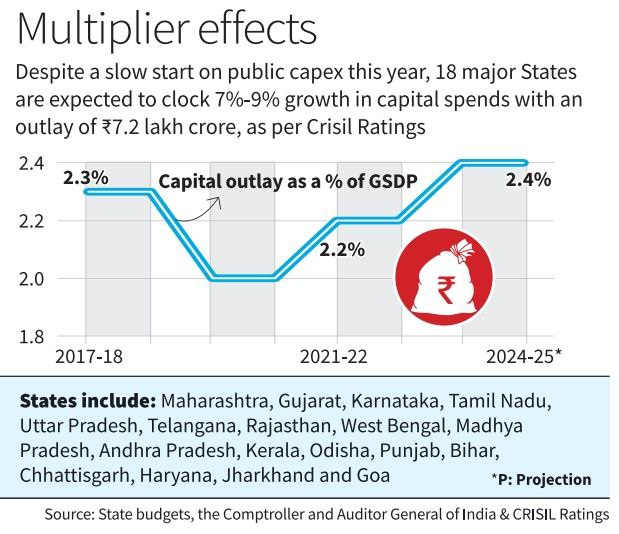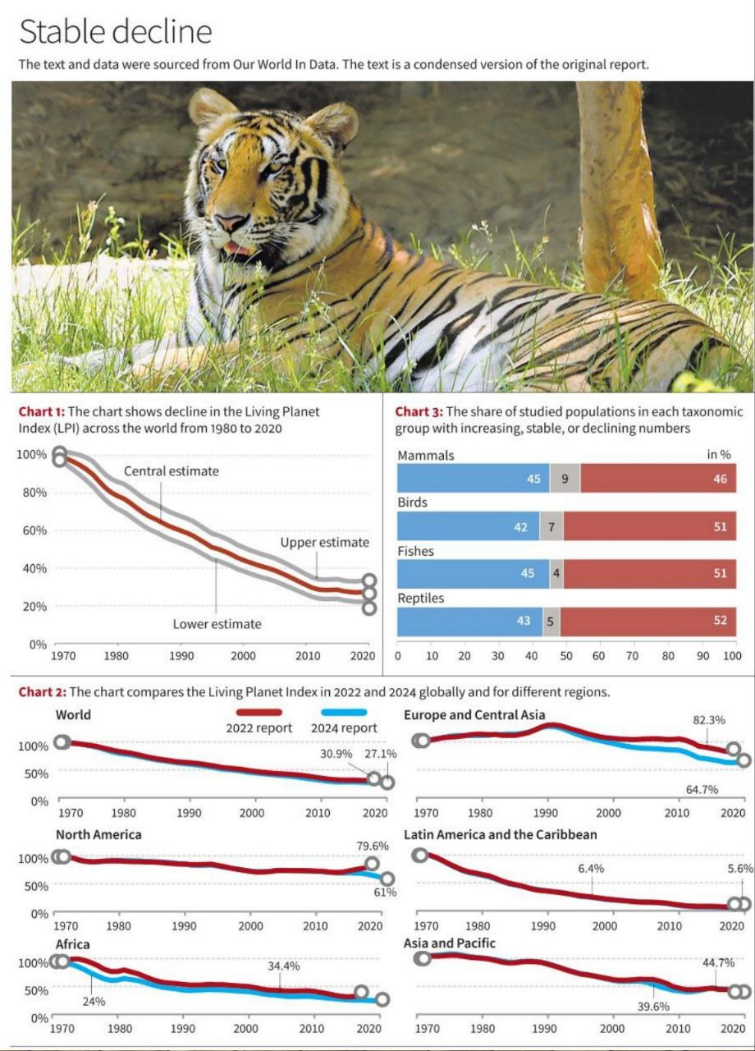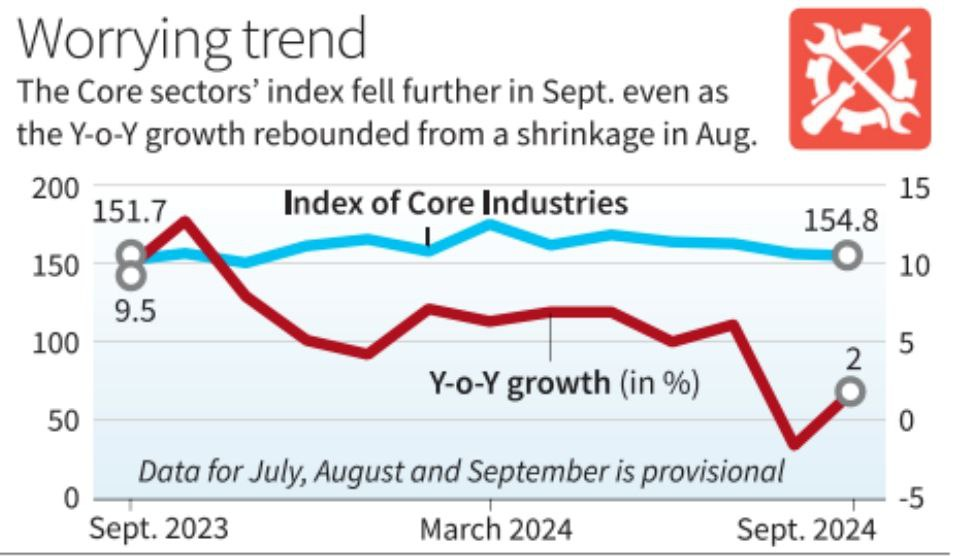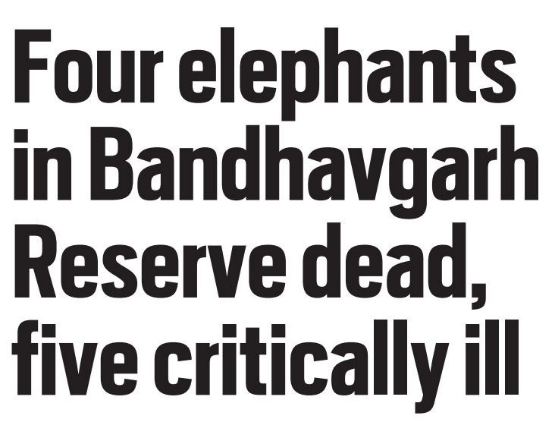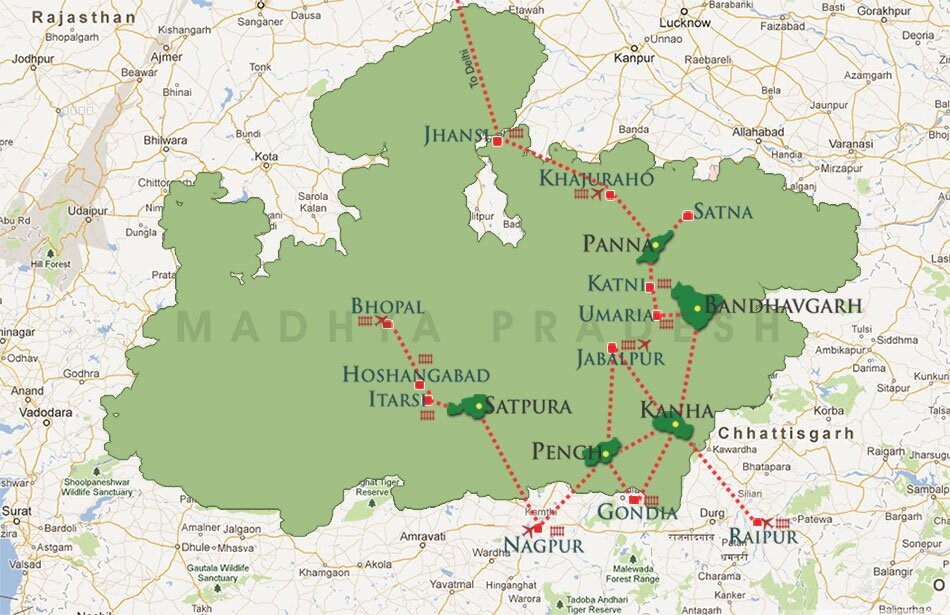Index:
- Delimitation and Women's Reservation
- Ayushman Bharat Pradhan Mantri Jan Arogya Yojana (AB PM-JAY) Expansion
- UNRWA and Israel's Recent Legislative Actions
- Delhi High Court Ruling on PMLA
- The Standard Veterinary Treatment Guidelines (SVTG)
- Key Insights on State Capital Expenditure (Capex) for 2024-25
- Living Planet Index (LPI) report
- Heat as disaster
- The Index of Core Industries (ICI)
- Bandhavgarh national park
- Other Headlines
1. Delimitation and Women's Reservation
- CONTEXT – The delayed Census of 2021, now expected to start in 2024 and conclude by 2026, has reignited discussions on delimitation and women’s reservation in elected bodies.
- Delimitation of Constituencies
- Definition: Delimitation is the process of redrawing the boundaries of electoral constituencies.
- Significance: The Census results will inform the delimitation exercise, impacting the allocation of seats in the Lok Sabha and state Assemblies.
- Historical Context:
- Delimitation has been conducted only four times since Independence (1952, 1953, 1973, 2002).
- The last exercise adjusted boundaries based on the 2001 Census without increasing the number of seats, frozen since 1976.
- Current Provisions:
- Article 82: Mandates the reallocation of seats after each Census.
- 42nd Amendment (1976): Frozen delimitation until after the first Census post-2000.
- Amendment Needed: Current laws must be amended to allow delimitation based on the 2021 Census results.
- Political Challenges:
- Consensus needed on the delimitation process; concerns arise about potential seat losses for states that manage population control well, particularly in the South.
- The BJP requires support from allies to pass necessary legislation.
- Women’s Reservation
- Constitutional Amendment: The 128th Amendment (2023) provides for 33% reservation for women in the Lok Sabha and state Assemblies.
- Implementation Contingency: This reservation is contingent upon the completion of the delimitation process following the Census.
- Impact:
- If the Lok Sabha increases from 545 to an estimated 770 seats post-delimitation, around 257 seats could be reserved for women.
This could ease political adjustments for parties and reduce male politicians’ fears of losing their seats.
2. Ayushman Bharat Pradhan Mantri Jan Arogya Yojana (AB PM-JAY) Expansion
- Overview
- Launch Date: October 29, 2023
- Initiative: Expanded health coverage under Ayushman Bharat PM-JAY for senior citizens aged 70 years and above.
- Key Features
- Eligibility: All senior citizens aged 70 and above, with no income limit.
- Beneficiaries: Approximately 6 crore individuals from 4.5 crore families are expected to benefit.
- Coverage Amount:
- Annual Health Coverage: ₹5 lakh per family.
- Top-Up: An additional ₹5 lakh for economically weaker sections (poor families).
- Objectives
- Universal Health Coverage: Aim to provide comprehensive health care and financial protection to senior citizens, ensuring access to necessary medical services without financial burden.
- Significance
- Enhances the existing health care framework, particularly focusing on the elderly population, which is often more vulnerable to health issues.
Supports the government’s broader goals of improving health indicators and reducing out-of-pocket expenditure on health.
3. UNRWA and Israel's Recent Legislative Actions
Overview of UNRWA
- Full Name: United Nations Relief and Works Agency for Palestine Refugees in the Near East (UNRWA).
- Established: 1949, to assist approximately 700,000 Palestinians displaced during the 1948 Arab-Israeli War.
- Operations Start: May 1, 1950.
- Areas of Operation: Gaza, West Bank, Lebanon, Syria, Jordan.
- Services Provided:
- Education
- Health care
- Relief and social services
- Microfinance
- Emergency assistance programs
- Current Beneficiaries: Approximately 5.9 million Palestinian refugees and their descendants.
- Funding: Primarily through voluntary contributions from donor states and a limited UN subsidy for administrative costs.
Recent Legislative Actions by Israel
- Knesset Bills Passed:
- Ban on UNRWA Operations: Prohibits UNRWA from operating in Israel and the Palestinian territories.
- Cutting Ties: Terminates all governmental ties with UNRWA, revoking legal immunities for its staff.
Context for the Legislation
- Allegations Against UNRWA: Israel accuses some UNRWA employees of involvement in the October 7 attacks by Hamas and claims to have identified UNRWA staff as affiliated with terrorist groups.
- Previous Actions: UNRWA has fired some staff based on investigations but denies any systemic support for armed groups.
Implications of the Legislation
- Impact on Aid Distribution: The ban could lead to the collapse of vital aid mechanisms in Gaza, where nearly 2 million people rely on UNRWA for basic necessities (food, water, hygiene).
- Broader Humanitarian Crisis: Criticism suggests that cutting UNRWA’s support exacerbates the humanitarian crisis in the region, with significant potential for increased suffering among Palestinians.
- Future Operations: The legislation could force UNRWA to relocate its headquarters and cease operations in critical areas, impacting millions of refugees.
Statements from UNRWA
UNRWA chief Philippe Lazzarini has condemned the ban as a “dangerous precedent” that will deepen the suffering of Palestinians and reflects an ongoing campaign to discredit the agency.
4. Delhi High Court Ruling on PMLA
Context
- Case Involved: The ruling pertains to a money laundering case involving Satyendar Jain, a senior leader of the Aam Aadmi Party (AAP) and former Delhi Health Minister.
Court’s Observations
- Use of PMLA: The Delhi High Court stated that the stringent provisions of the Prevention of Money Laundering Act (PMLA) should not be employed as a tool for unnecessary incarceration.
- Bail Granted: The court granted bail to two accused, Vaibhav Jain and Ankush Jain, noting that their prolonged custody was unjustifiable since the trial would take time and they were not responsible for the delays.
Legal Principles
- Section 45 of PMLA: Under this section, accused individuals must prove their prima facie innocence and assure the court that they will not commit further offenses while on bail. However, the court emphasized that this does not create an absolute prohibition against granting bail.
- Comparative Severity: The court differentiated between money laundering cases and serious crimes like murder or rape, arguing that those accused of money laundering should not be treated in the same manner as those facing more severe charges.
Fundamental Rights
Presumption of Liberty: The ruling reinforced the principle that bail should be the default position, not jail. It highlighted Article 21 of the Indian Constitution, which protects an individual’s right to life and personal liberty.
5. The Standard Veterinary Treatment Guidelines (SVTG)
Overview
- Purpose: The SVTG aims to reduce and regulate antibiotic use in the treatment of diseases in livestock and poultry while promoting the use of Ayurvedic and herbal medicines.
- Significance: This marks the first time the Indian government has established a comprehensive set of treatment protocols for a wide range of animal diseases.
Objectives
- Minimizing Antimicrobial Resistance: The guidelines are designed to combat antimicrobial resistance by limiting unnecessary antibiotic use.
- Economic Benefits: They aim to lower the economic burden on farmers through cost-effective treatment options.
Key Features
- Integration of Ayurveda: The guidelines advocate for the use of Ayurvedic drugs alongside conventional veterinary medicine. Clinical validation has been achieved for certain Ayurvedic treatments by the National Dairy Development Board (NDDB).
- Ethnoveterinary Medicine: The document includes recommendations for validated ethnoveterinary practices, particularly for the treatment and management of bovine mastitis, which help reduce reliance on antibiotics.
Development Process – Collaborative Effort: The guidelines were drafted by a team of over 80 professionals from veterinary and medical fields, with input from various states to ensure comprehensive coverage and relevance.
6. Key Insights on State Capital Expenditure (Capex) for 2024-25
Current Status
- Initial Slowdown: Capital expenditure by Indian states began slowly in 2024-25, with a 7% decrease compared to the previous year by August, attributed to general elections impacting the first quarter.
- Economic Signals: The Finance Ministry noted this slowdown as a potential indicator of strain in certain economic sectors, alongside a decline in passenger vehicle sales.
Projections for Growth
- Crisil Ratings Forecast: Expects capital outlays of the top 18 states (accounting for 94% of state capex) to rise by 7% to 9%, reaching approximately ₹7.2 lakh crore, compared to ₹6.7 lakh crore in 2023-24.
- ICRA Expectations: Projects a 13% increase in combined capital spending for 13 major states, estimating it to reach ₹6.5 lakh crore, slightly below their budget estimates.
Key States and Fiscal Space
- States with Adequate Fiscal Space: Gujarat, Karnataka, Maharashtra, and Tamil Nadu are expected to meet their budgeted capex plans due to sufficient fiscal resources.
- Capex as a Share of GSDP: Projected at 2.4% for the year, consistent with the previous fiscal year, reflecting robust investment despite initial slowdowns.
Economic Implications
- Multiplier Effects: Increased capex is anticipated to stimulate economic growth, as it represents investments in infrastructure and public services.
Borrowing Trends: States have ramped up borrowings by 26% year-on-year in Q2, indicating a commitment to enhancing capital outlays despite earlier declines.
7. Living Planet Index (LPI) report
CONTEXT: The World Wildlife Fund’s 2024 Living Planet Index (LPI) report published recently makes for some grim reading. The headline is a 73% average decline in wildlife populations since 1970.
- While this trend is extremely worrying, the numbers presented are often misunderstood or misreported.
- First, let us clarify what this doesn’t mean. It doesn’t tell us anything about the species lost; the number or percentage of species or populations that are declining/lost; or the number of extinctions. Any headline claiming that we have “lost 73% of wildlife” or that “73% of species have gone extinct” or that “73% of species are declining” is incorrect.
- What this metric tells us is that across the 34,836 studied wildlife populations, the average decline was 73%. As we will see later, this doesn’t mean 73% of populations are in decline; in fact, around half of the studied populations were in decline, while half were either increasing or stable.
Fact
- The 2022 LPI reported an average decline of 69% since 1970. The 2024 update reports a 73% decline. From this, you might assume that wildlife populations have dropped by another 4 percentage points in the additional two years of data.
- The biggest shifts in this report, compared to the last, are for Europe and Central Asia; and Africa, where the reductions are more substantial in the most recent update. The reason for the change in Africa is a 45% increase in the number of populations included, many of which are declining.
This has caused the LPI for this region to shift down. The exclusion of non-native species from the LPI has meant there are fewer populations counted in Europe and Central Asia, and this has been the main reason for the change in the trend in this region.
8. Heat as disaster
- Tamil Nadu’s move to declare heat as a State-specific disaster, rendering people so affected eligible for assistance from the State, is unequivocally a beacon shining in a country where environmental degradation goes together with unplanned cities, poverty, and limited access to shelter and health care.
- The World Meteorological Organization declared that 2023 was the hottest year on record.
- It is critical that the human body remains at the optimal temperature of 37° Celsius: living in temperatures that constantly and consistently exceed this limit can cause immeasurable stress and the breakdown of bodily functions, impact vital organs, and lead to death in vulnerable populations.
The World Economic Forum has warned that global warming is on track to reach a ‘wet- bulb temperature’ level of 35° C, where humans can no longer regulate safe body temperature through sweating.
9. The Index of Core Industries (ICI)
Content: Output levels in India’s eight core sectors, which account for about 40% of the country’s industrial production, continued to drag in September with the Index of Core Industries (ICI) falling to a 10-month low of 154.8. That is 0.83% below August levels.
On a year-on-year basis, however, core industries’ output recorded a 2% uptick, reflecting a moderate but positive turnaround from August, when the index had contracted 1.6%, the first such shrinkage in 36 months.
Index of Industrial Production (IIP) contracted marginally in August, the first such occasion since October 2022. The National Statistical Office will release September’s IIP numbers on November 12.
Index of Core Industries (ICI)
- ICI is a production volume index which is released on monthly basis.
- The index measures combined and individual performance of production in selected eight core industries.
- The base year of the ICI has been revised to 2011-12 from 2004-05.
Institutions involved
- The Office of Economic Adviser, Department for Promotion of Industry and Internal Trade under Ministry of Commerce & Industry is mandated with releasing the Index.
Eight Core Industries of the Index
The eight core industries are: Coal, Crude Oil, Natural Gas, Refinery Products, Fertilizers, Steel, Cement and Electricity.
Weight carried by individual industries are:
- Coal (weight: 10.33%), Crude Oil (weight: 8.98%), Natural Gas (weight: 6.88%), Petroleum Refinery (weight: 28.04%),
- Fertilizers (weight: 2.63%), Steel production (weight: 17.92%), Cement production (weight: 5.37%), Electricity generation (weight: 19.85%)
Index of Industrial Production (IIP)
- The IIP number measures the industrial production for the period under review, usually a month, as against the reference period.
- There is a lag of six weeks in the publication of the IIP index data after the reference month ends.
- It is currently calculated using 2011-2012 as the base year.
Institution involved
National Statistical Organisation (NSO) under the Ministry of Statistics and Programme Implementation (MOSPI) releases the IIP data.
IIP Index Components
- Broad sectors, namely, Mining (14.4%), Manufacturing (77.6%) and Electricity (8%) Use-based sectors, namely Basic Goods, Capital Goods and Intermediate Goods etc.
These Eight Core Industries mentioned in above section comprise 40.27 percent of the weight of items included in the IIP.
10. Bandhavgarh national park
Bandhavgarh National Park is one of India’s most renowned wildlife sanctuaries, located in the Umaria district of Madhya Pradesh. Here are some key highlights about the park:
Overview
- Established: 1968 as a national park and later became a Tiger Reserve in 1993.
- Area: The core area spans 105 square kilometers, with a buffer area of approximately 400 square kilometers.
- Location: Situated in the Vindhya hills, the park features a diverse topography with steep ridges, undulating forests, and open meadows.
Wildlife
- Royal Bengal Tigers: Bandhavgarh is known for its high density of Royal Bengal Tigers, making it one of the best places in the world to spot these majestic animals2. The park is home to around 44-49 tigers.
- Other Mammals: The park hosts 37 species of mammals, including leopards, deer, and wild boars.
- Birds and Butterflies: With over 250 species of birds and 80 species of butterflies, the park is a haven for birdwatchers and butterfly enthusiasts.
Historical Significance
- Bandhavgarh Fort: The park gets its name from the ancient Bandhavgarh Fort, which translates to “Brother’s Fort.” According to legend, it was gifted by Lord Rama to his brother Lakshmana to keep a watch on Lanka.
White Tigers: The first white tiger, Mohan, was captured in this region in 1951 by Maharaja Martand Singh of Rewa. All white tigers in the world today trace their lineage back to Bandhavgarh

